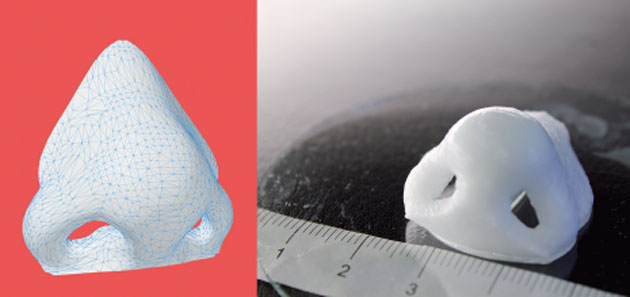
Professor Marcy Zenobi-Wong’s team of researchers, led by Matti Kesti, at ETH Zurich’s Cartilage Engineering and Regeneration laboratory, has found a way to bioprint a joint or nose cartilage that is designed to grow with the body over time. Current cartilage transplant procedures rely on two-dimensional cell generation that doesn’t evolve as the patient’s joint regains function in the future. 3D bioprinted cartilages, on the other hand, are expected to reproduce and become a part of the body’s mechanism.
via Engadget
Image: Cartilage Engineering & Regeneration Group, ETH Zurich





